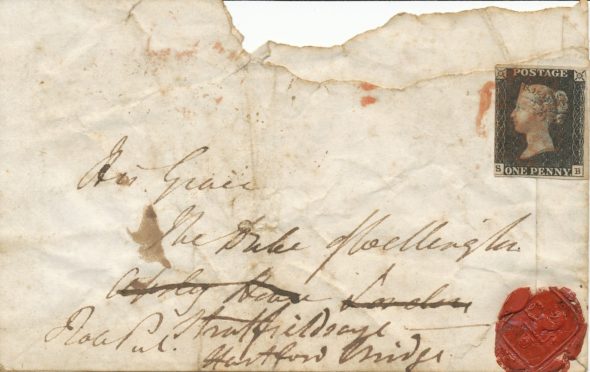On the landmark date of May 6, 1840, the very day that the world’s first adhesive postage stamp made its debut, a ‘constant reader’ wrote to The Morning Post to suggest a type of envelope which would do away with the need for letters to be closed on the back by sealing wax.
“Sir – I think it will require no little ingenuity so to fold a letter as to make the edges of it join at the ‘right- hand corner’, the only place where you are allowed to place the stamp.”
By the end of May, the London stationer Henry Tuck had done exactly that by coming up with a way in which the new Penny Black stamp could be used as a seal to close letters.
Tuck’s ‘Hermetic Envelope’ allowed the stamps to have a dual purpose – to pay the postage and to seal the letter. The experimental envelope was constructed in such a way as to allow an additional flap to be wrapped around to the right-hand-side of the front. The flap was then pressed down and sealed by the stamp.
From a private collection comes the remarkable example illustrated – a Penny Black on a torn Hermetic envelope sent in 1840 by Sir Robert Peel, famous today for establishing the antecedents of our police service – hence ‘bobbies’ and ‘peelers’ – and who served twice as Prime Minister.
The addressee is the arguably more famous Duke of Wellington, victorious against Napoleon at the Battle of Waterloo in 1815 and, like Peel, twice a Prime Minister.
Hermetic envelopes are philatelic rarities. About half a dozen have survived and two unused examples are in the Royal Collection.










